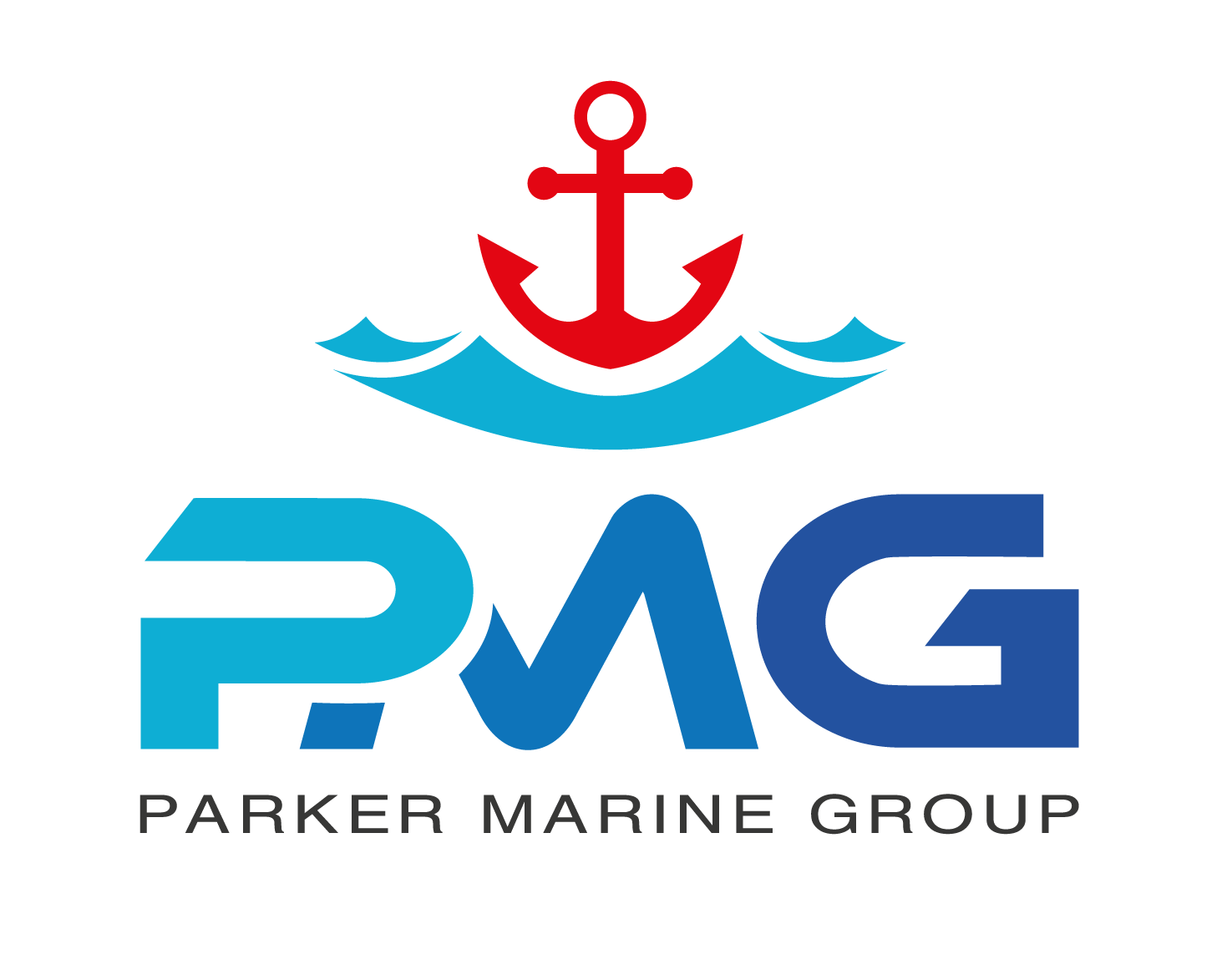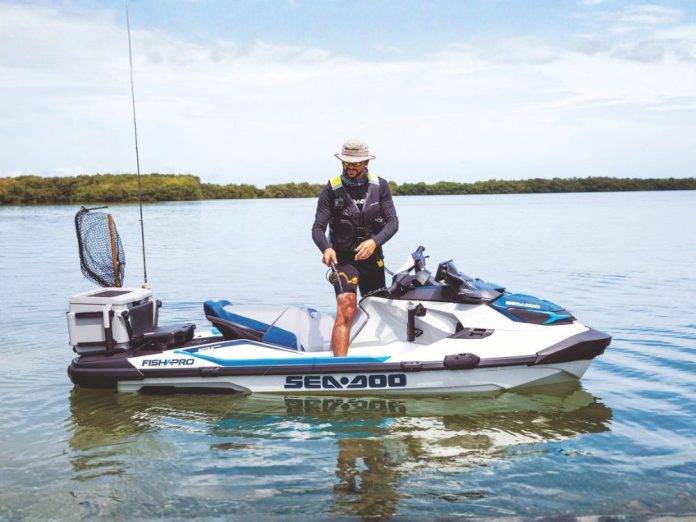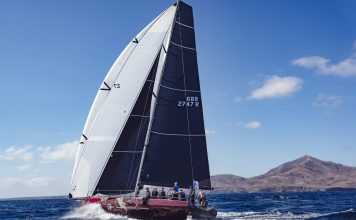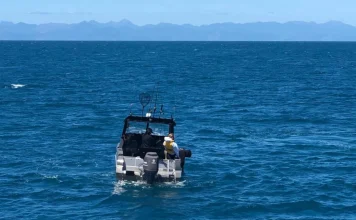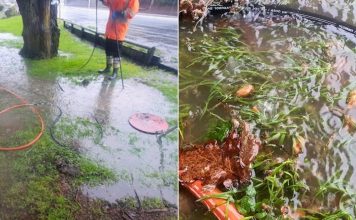Canning or bottling perishable foodstuffs like fish is a useful skill for cruising sailors, writes Birgit Hakl.
Around many tropical islands and inside lagoons catching reef fish is not a good idea because of the risk of ciguatera poisoning (ciguatera is a toxin that accumulates in reef fish and their predators and causes gastrointestinal and neurological poisoning in humans and other mammals). We prefer watching colourful reef fishes to eating them anyway, so we only hunt with our camera when we go snorkelling. But we try our luck and troll a lure whenever we’re on a passage, in an effort to stock up on pelagic fish to eat when we are at anchor.
When underway we routinely troll a simple hand line spooled with heavy monofilament (so as not to lose a catch) and rigged with a bungee, metal leader and an undersized lure (we don’t want monsters to bite, but they occasionally do!) behind our S&S 41 SY Pitufa. Fishermen claim that fish bite best at dusk and at dawn. In our experience, they usually bite whenever it’s really inconvenient: during a squall, just when I’m serving lunch, or when we’re seasick at the beginning of a passage. We therefore call them ‘oh-no-not-now-fishies’.

While Christian brings in the catch, I go and get the tools for the imminent murder: solid gloves, a sharp knife, a cutting board and a big square bucket to limit the extent of the bloody mess. Some cruisers daze the fish with alcohol in the gills, but we try to calm them down with a rag over their eyes and put them out of their misery as quickly as possible. Christian cleans the fish on the aft deck and cuts it into chunks which are then handed on to the galley for further processing.
We don’t have a freezer, so we cannot just conveniently store frozen steaks for later. I therefore cut away skin, bones and bloody bits and start calculating. I set aside some choice pieces to eat raw as sashimi, sushi, maki, carpaccio and poisson cru (i’a oata), and as much fish as we’ll be able to eat within seven days. Covered with soy sauce, this selection goes straight into the fridge in plastic boxes.
Then comes the real challenge: canning/bottling the rest of the fish. Filling up jars and handling the pressure cooker in rough weather isn’t exactly fun, but then we’re glad to have our own preserves in remote anchorages. If a fish is considerate enough to bite just before we reach our anchorage, the whole process is of course much easier! BNZ
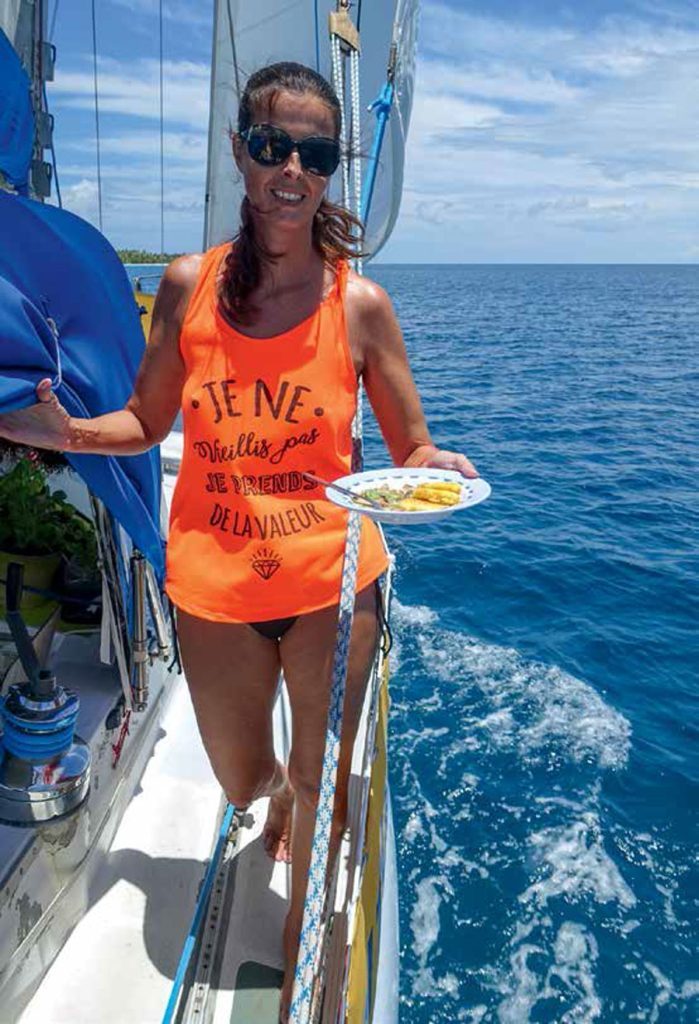
Birgit and Christian have been fishing, canning, cooking, eating and sometimes sailing aboard Pitufa for 11 years.
Check out their blog www.pitufa.at for more info!
HOW TO CAN/BOTTLE FISH
YOU NEED:
• Boneless fish pieces
• Soy sauce
• Glass jars (regular jam or pickle jars with a lid that goes ‘click’)
• A pressure cooker
Fill the jars about ¾ full of fish pieces. Add water and a squirt of soy sauce, so the fish pieces are covered. Clean the lids and the rims with alcohol and close the jars (tight, but not extra tight – you must allow steam to escape).
Put a towel on the bottom of the pressure cooker (to avoid direct contact with the glass), add the closed jars of fish and fill the pressure vessel with the required minimum of water (about halfway up the jars). Place the pressure cooker on a high heat until it builds up pressure, then reduce the heat (make sure the pressure cooker holds the pressure) and cook for 45 minutes. Allow to cool.
As the jars cool down, you should hear clicking sounds as the vacuum forms inside them. Check all the lids and use up any jars where a vacuum has not formed immediately – or put them aside for a second go in the pressure cooker.
The vacuum-sealed jars last months without refrigeration..

POISSON CRU A LA PITUFA
In French Polynesia the national dish is called poisson cru (i’a oata in Reo Tahiti). In the Cook Islands we ate a similar dish called ika mata. Both names mean ‘raw fish’ and both variations are usually served in a rather bland sauce. We prefer a spicier version.
Cut the fish into small cubes and marinate in lemon/lime juice. Add veg/fruit according to taste and what you find in your fridge (lettuce, tomatoes, peppers, leek, beans, cucumbers, mangoes, papaya, apples – be creative!). Add coconut milk, more lemon or lime juice, some Thai fish sauce, salt and pepper, chopped chili according to taste and ideally fresh herbs (Thai basil and cilantro work best, but parsley and sweet basil will do).
Serve with warm rice, breadfruit fritters/patties or fresh bread.


HOW TO PICKLE FISH
Pickled fish still needs to be refrigerated, but it lasts longer and adds welcome variety. Tip: pickling works best with white meat fish such as mahi-mahi or wahoo.
Cut the fish pieces into thin slices and put them into a jar. Fill up the jar 50:50 with water and vinegar. Add sugar according to taste (we use one tablespoon for 250ml). Optionally, add chopped onions. Leave the jar in the fridge at least overnight and serve fish on salads, on bread or in tortilla wraps. You can add mustard, dill or cream before serving – make up your own creative variations!











